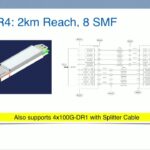|
|

Andy Bechtolsheim presented for Arista at NFD16 |

This video is part of the appearance, “Arista Networks Presents at Networking Field Day 16“. It was recorded as part of Networking Field Day 16 at 15:30 - 17:30 on September 13, 2017.
Watch on YouTube
Watch on Vimeo
Andy Bechtolsheim, Founder, Chief Development Officer and Chairman at Arista, reviews how Arista is preparing for the 400 Gigabit future. While 100G Ethernet is gaining ascendency now, by 2021 he sees the 400G port numbers reaching parity with 100G Ethernet. The optics for this will be powered by 100G per lane, as defined by the 100G Lambda MSA consortium. He further reviews how this standard will allow for more seamless transition to 400G than the standards proposed by the IEEE.
Bechtolsheim highlights the rapid growth of 100 Gigabit Ethernet, which is expected to continue its ascendancy until 2021 when 400 Gigabit ports will start to reach parity. He explains that the transition to 400G will be facilitated by the 100G per lane standard defined by the 100G Lambda MSA consortium, which Arista is a part of. This standard is seen as more efficient and forward-compatible compared to the IEEE’s proposals, which have been slower to finalize and less practical in terms of implementation.
Bechtolsheim also discusses the technical intricacies and market dynamics of Ethernet and optical lane speeds, emphasizing the importance of lower power consumption and cost-effectiveness in driving adoption. He outlines the progression from 25G lanes to 50G and eventually to 100G lanes, noting that the latter will become the dominant standard due to its efficiency. The presentation also touches on the challenges and solutions related to form factors, such as the OSFP and QSFP-DD, and the importance of forward and backward compatibility in optical modules. Bechtolsheim concludes by stressing the economic drivers behind the rapid adoption of new standards and the potential future limitations of electrical lane speeds, hinting at a possible transition to photonics as a long-term solution.
Personnel: Andy Bechtolsheim








